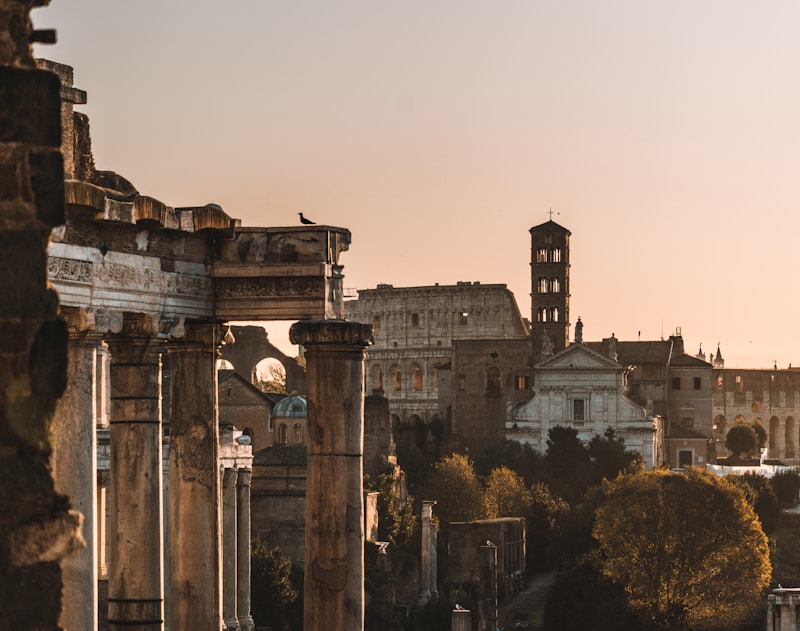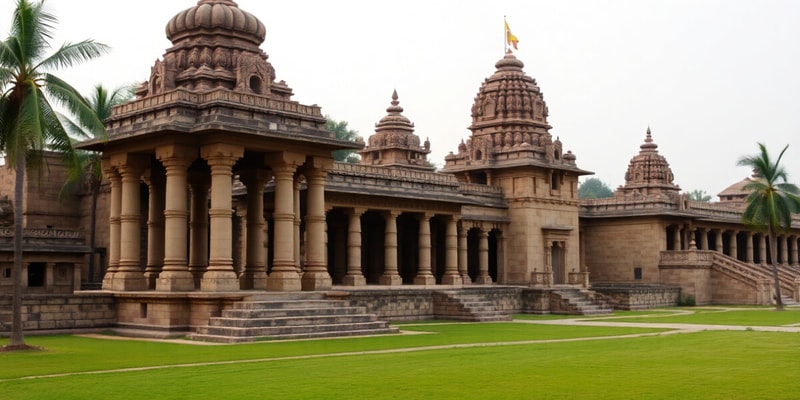Podcast Beta
Questions and Answers
किस शासक ने अपने साम्राज्य में बौद्ध धर्म को बढ़ावा दिया और उसके लिए पत्थरों और गुफाओं पर शिलालेख लिखवाए?
$84,000$ स्तूप बनवाने का श्रेय किस मौर्य शासक को जाता है?
मौर्य साम्राज्य के दौरान, किस प्राचीन भारतीय ग्रंथ के सिद्धांतों के आधार पर राज्य का प्रशासन किया जाता था?
किस मौर्य शासक ने एक एकीकृत मुद्रा प्रणाली, क्षेत्रीय प्रशासकों और प्रशासकों का नेटवर्क, और व्यापारियों, किसानों और व्यापारियों के लिए न्याय और सुरक्षा प्रदान करने वाले एक नागरिक सेवा की स्थापना की?
Signup and view all the answers
मौर्य साम्राज्य के उत्तराधिकारियों के कारण यह धीरे-धीरे कुछ शहरों और पंजाब क्षेत्र तक ही सीमित हो गया था।
Signup and view all the answers
चंद्रगुप्त मौर्य ने किसकी मदद से एक व्यापक क्षेत्र पर अधिकार प्राप्त किया?
Signup and view all the answers
मौर्य साम्राज्य के किस सम्राट ने बौद्ध धर्म की प्रोत्साहन की?
Signup and view all the answers
किस सम्राट ने सेल्यूकस पहला निकेटर के खिलाफ एक प्रमुख विजय प्राप्त की?
Signup and view all the answers
किसने सेल्यूकस पहला निकेटर का साम्राज्य कुचला?
Signup and view all the answers
कौटिल्य (चाणक्य) किन किसी के मार्गदर्शन में हसनत हुई?
Signup and view all the answers
Study Notes
Mauryan Empire
Overview
The Mauryan Empire, ruled by the Mauryan dynasty, emerged around 321 BC and lasted until 185 BC. Founded by Chandragupta Maurya, this empire was the first to unify much of the Indian subcontinent under one rule. The empire's territory spanned from Bengal in the east to parts of southern India, and from the Himalayan tribal kingdom in the north to almost the entire Indian subcontinent (except for the southern peninsular tip). The empire was known for its centralized government, efficient administration, and its patronage of Buddhism under Emperor Ashoka.
Chandragupta Maurya: Founding the Empire
Chandragupta Maurya founded the empire by taking advantage of the power vacuum left after Alexander the Great's departure from northern India. He gained control over a vast area through diplomacy and military conquests, founding an empire that would dominate much of India for centuries. His success can be attributed to his mentor Kautilya (also known as Chanakya), author of the Arthashastra, who advised him on acquiring and maintaining power. After ruling for about 25 years, Chandragupta abdicated in favor of his son Bindusara.
Consolidation and Expansion
Under Chandragupta's rule, the empire expanded rapidly through diplomatic marriages, strategic alliances with vassals, and military campaigns. One notable conquest was against Seleucos I Nicator, who controlled territory around Pataliputra. This victory led to the incorporation of areas in modern-day Afghanistan into the Mauryan Empire. When Chandragupta died, he passed the throne to his son Bindusara, who continued the expansionist policies and extended the empire further south.
Ashoka's Reign
Ashoka, the third Mauryan emperor, is one of the most famous rulers in Indian history for his conversion to Buddhism and his support of the religion throughout his empire. He issued edicts on Buddhism carved onto rocks and caves across his domain, including his sending of religious envoys to Greece and Egypt. Although these efforts did not result in significant conversions, they marked the first instance of a ruler promoting Buddhism so publicly.
During his reign, Ashoka also built stupas, or Buddhist shrines, throughout his empire to enshrine the relics of the Buddha and commemorate key events in the religion. He is believed to have built approximately 84,000 stupas during his rule. Ashoka's empire gradually shrank under his successors, eventually being reduced to three city-states and parts of the Punjab region.
Centralized Government and Administration
Chandragupta Maurya established a single currency across India, a network of regional governors and administrators, and a civil service to provide justice and security for merchants, farmers, and traders. Through the disciplined central authority of the Mauryan Empire, farmers were freed of regional kings' tax and crop collection burdens. Instead, they paid through a nationally administered system of taxation that operated under the principles of the Arthashastra, an ancient Indian treatise on governance.
Under Emperor Ashoka, laws were made clear in central public spaces through rock and pillar edicts. The empire was strict in revenue collection, but it funded numerous public works projects to enhance productivity. Ashoka sponsored the construction of thousands of roads, waterways, canals, rest houses, hospitals, and other types of infrastructure.
Military and Diplomacy
The Mauryan Army was the largest standing military force of its time, with an estimated 600,000 infantry, 30,000 cavalry, and 9,000 war elephants. Despite Ashoka's renunciation of offensive warfare and expansionism after converting to Buddhism, he maintained this standing army to protect the empire from external threats and maintain stability and peace across Western Asia and southern Europe.
Ashoka employed diplomacy alongside warfare, sending religious envoys to Greece, Syria, Egypt, Macedonia, Cyrene, and Epirus. While these efforts did not result in widespread conversions, they marked the first instance of a ruler promoting peace and unity across diverse cultural boundaries.
Legacy
The Mauryan Empire left a lasting impact on India and South Asian history. It laid the groundwork for subsequent empires and contributed significantly to the development of the Indian subcontinent. Despite its decline, the empire's influence continued to shape India's political landscape, culture, and religions. Today, the legacy of the Mauryan Empire serves as a foundation for understanding the historical evolution of India and its neighboring regions.
Conclusion
In conclusion, the Mauryan Empire played a pivotal role in shaping Indian history. Founded by Chandragupta Maurya and ruled by notable figures like Ashoka, this empire brought together various kingdoms and territories under centralized government and administration. Known for its patronage of Buddhism, efficient bureaucracy, and strong military, the Mauryan Empire set the stage for future developments in the Indian subcontinent and beyond.
Studying That Suits You
Use AI to generate personalized quizzes and flashcards to suit your learning preferences.
Description
जानें मौर्य साम्राज्य के स्थापति चंद्रगुप्त मौर्य और उसके उत्तराधिकारी अशोक के बारे में। इसके साथ ही मौर्य साम्राज्य का संक्षिप्त विवरण और उसने कैसे भारतीय सबकों को एकत्र किया।




